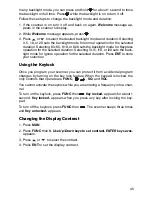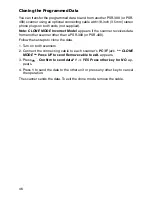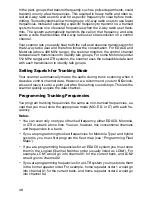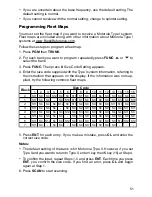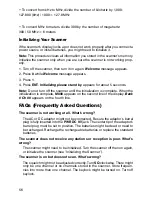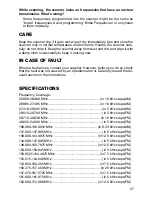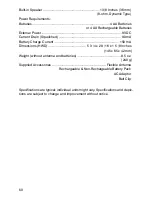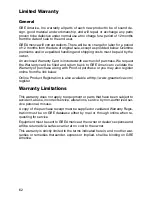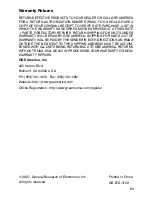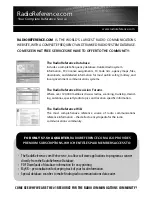
55
3. Select a talk group ID bank using
FUNC
, or .
4. Press
FUNC
then
6
.
Clear entire list? Press 1 to clear all, any other key
aborts
appears.
5. Press
1
to clear all talk group IDs within a bank.
List cleared.
appears.
To cancel the deletion, press any key except
1
. The scanner returns to the talk
group ID memory mode.
Changing the Open/Closed Mode
1. Press
MAN
.
2. Press
FUNC
then or to select the channel storage bank.
3. Press
FUNC
then •
/DELAY
.
Bank OPEN.
or
Bank CLOSED.
appears. After
that message disappears, the fifteenth digit on the third line of the display
changes from
+
to
–
or vice versa.
4. Repeat Steps 2 and 3 for each bank.
Birdie Frequencies
Every scanner has birdie frequencies. Birdies are signals created inside the
scanner’s receiver. These operating frequencies might interfere with transmis-
sions on the same frequencies. If you program one of these frequencies, you
hear only noise on that frequency. If the interference is not severe, you might
be able to turn
SQ
clockwise to omit the birdie.
To find the birdies in your scanner, begin by disconnecting the antenna and
moving it away from the scanner. Make sure that no other nearby radio or TV
sets are turned on near the scanner. Use the search function and scan every
frequency range from its lowest frequency to the highest. Occasionally, the
searching will stops as if it had found a signal, often without any sound. This is
a birdie. Make a list of all the birdies in your scanner for future reference.
Frequency Conversion
The tuning location of a station can be expressed in frequency (kHz or MHz) or
in wavelength (meters). The following information can help you make the nec-
essary conversions.
1 MHz (million) = 1,000 kHz (thousand)
• To convert MHz to kHz, multiply the number of megahertz by 1,000:
30.62 (MHz) x 1000 = 30,620 kHz





